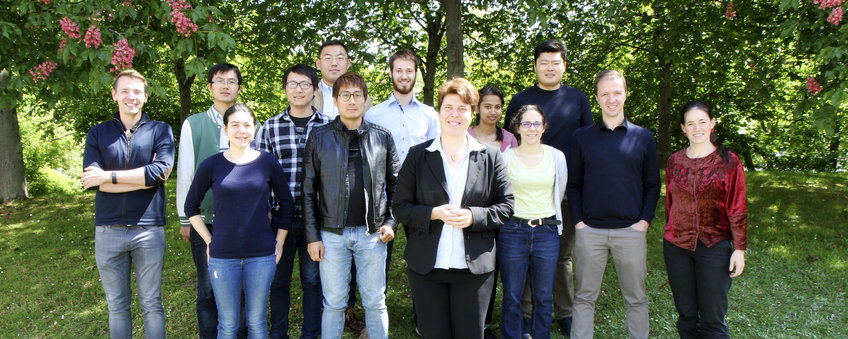
MaxSynBio
Max Planck Research Network in Synthetic Biology
In the MaxSynBio consortium, the department of Physical Chemistry of Polymers combines expertises on the design of nano- and micro-compartments for the assembly of a synthetic cell. Precision polymer synthesis combined with state-of-the-art emulsion polymerization strategies are utilized to design stimuli-responsive, catalytic, enzymatic modules that carry and release cargo or produce materials in a confined environment.
One focus is metabolic reactions in confined spaces, which are key phenomena in living organisms. We have developed polymer-based nanocontainers that conduct catalytic reactions as building blocks for synthetic cells. We are interested in the mimicking tasks with enzymatic metabolisms, energy regeneration and useful production, ultimately toward replacement of part of life-systems and applications in biological or environmental purposes. Now, our achievements are designing modules using silica nanocontainers loaded with enzymes. These enable enzymatic cascade reactions between subcompartments in confinements, coenzymes regeneration to mimic mitochondrial metabolisms and controlling reactive oxygen species for autoxidation effects and therapeutics.
Another strategy to confine reactions is based on a modular approach for polymeric vesicles, so-called polymersomes, with a multifunctional surface, for example, hydroxyl, alkyne or acrylate groups and others have been prepared. We have demonstrated that the surface of the polymersome can be functionalized to facilitate imaging, via fluorescent dyes, or to improve the specific adhesion to surfaces by using a biotin functionalization. This generally applicable multifunctionality allows for the covalent integration of various molecules in the membrane of a synthetic cell. Additionally, we are also exploring ways to induce growth in polymersomes by delivering amphiphilic building blocks that can fuse with the membrane and increase its surface area. Polymersomes that grow under stimulation could be used to implement complex cell behavior in synthetic systems.
Such modules can further be combined with photocatalysis; using this strategy, we have developed a functional module that regenerates nicotinamide adenine nucleotide coenzymes (NAD) upon light irradiation. The advantage of using NPs is that different functional modules can be obtained through the choice of the NPs or by combining different NPs. This opens the possibility for the creation of a library of modules that could be used together to achieve cell-like behavior.
Sturdy molecular chains called gradient polymers have long proved difficult to synthesize. Using compartmentalization is a simple way to make them. In a gradient polymer, the composition gradually transitions along the polymer’s length, from mostly one component to mostly another. Making gradient polymers is a laborious task and often needs special dosing techniques. Nature can make multi-segmented copolymers within living cells. We sequestered two types of monomers in an emulsion, in which droplets of one monomer are dispersed throughout the second monomer. By exploiting the solubility difference of the monomers, we were able to confine the polymerization inside of nano-droplets of the emulsion. As that compound was gradually consumed, the change in concentration pulled ever-greater amounts of the other ingredient into the chains, creating a gradient effect.